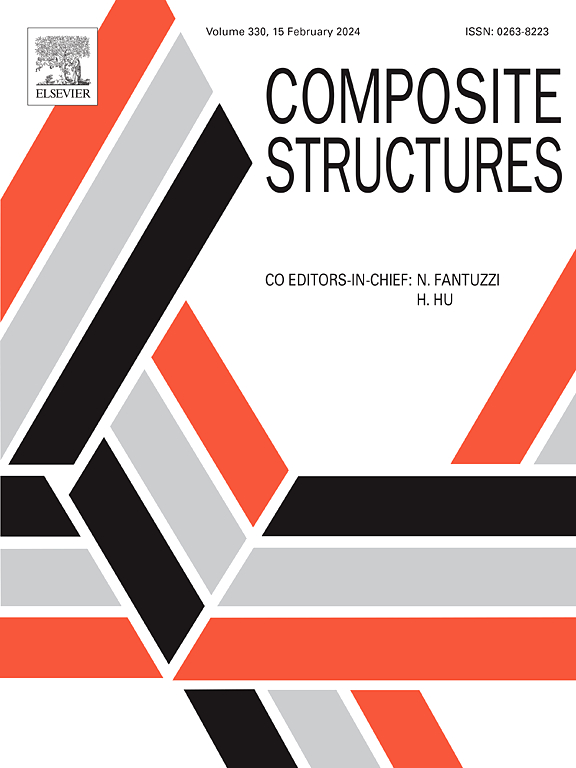利用单一失效原因测试作为参考,基于声发射事件聚类分析 GFRP 复合材料的损伤特征
IF 7.1
2区 材料科学
Q1 MATERIALS SCIENCE, COMPOSITES
引用次数: 0
摘要
手稿中介绍了一种基于声发射(AE)的复合材料断裂原因识别新方法,以及基于参考数据集的 AE 数据聚类。声发射(AE)是一种广泛应用于断裂分析的非破坏性方法,但由于其多维性,数据不易分析,特别是在声学事件同时出现且具有相似参数的情况下,即使它们是不同失效机制的影响。在这项研究中,除了最简单的 K-means 外,我们还采用了一种无监督学习算法,通过模糊 c-means 到高斯混合模型(GMM)和频谱聚类来研究从我们复合材料制造的三点弯曲测试中获得的数据集。在分析之前,我们先进行了数据整理、特征确定(拉普拉斯分数)和最佳聚类调查次数(DB 指数、Caliński-Harabasz 分数和 Silhouette 方法)。为了能够解释聚类结果,我们又进行了三组测试,包括纤维断裂(两种方法)、树脂断裂(拉伸和压缩)和分层(DCB 测试),从而创建了参考数据集。对这些数据集进行了统计分析,并为每个 AE 特征以及振幅频率特性生成了核密度估计值。然后,通过与参考数据集进行比较,将主数据集获得的聚类分配给特定的故障原因。结果发现,使用频谱聚类生成的聚类最符合实际情况,因为可以将故障原因归于这些聚类。本文章由计算机程序翻译,如有差异,请以英文原文为准。
Damage characterisation of GFRP composites based on clustering acoustic emission events utilizing single-failure-cause tests as reference
A new method to identify causes of fracture in composites based on acoustic emission (AE) and clusterization of AE data based on reference datasets is presented within the manuscript. Acoustic Emission (AE) is a widely used non-destructive method for fracture analysis, but data due to their multidimensionality are not easy to analyze especially if the acoustic events appear simultaneously and have similar parameters even if they are an effect of different failure mechanisms. In this research, we utilize an unsupervised learning algorithm besides the simplest K-means, through fuzzy c-means to Gaussian Mixture Model (GMM) and spectral clustering to investigate the dataset obtained from the three-point bending test manufactured by us composite. The analysis is preceded by data curation, feature determination (Laplacian score) and the best number of cluster investigations (DB index, Caliński-Harabasz score, and Silhouette method) To enable interpretation of the clustering we run an additional three groups of tests covering fibre breakage (two methods), resin fracture (in tension and in compression) and delamination (DCB test) creating reference datasets. These datasets were statistically analyzed and kernel density estimators were generated for each AE feature as well as amplitude-frequency characteristics. Clusters obtained for the main dataset were then assigned to particular causes of failure by comparing them with the reference dataset. It was found that clusters generated using spectral clustering were the most realistic ones, as it was possible to assign the cause of failure to them.
求助全文
通过发布文献求助,成功后即可免费获取论文全文。
去求助
来源期刊

Composite Structures
工程技术-材料科学:复合
CiteScore
12.00
自引率
12.70%
发文量
1246
审稿时长
78 days
期刊介绍:
The past few decades have seen outstanding advances in the use of composite materials in structural applications. There can be little doubt that, within engineering circles, composites have revolutionised traditional design concepts and made possible an unparalleled range of new and exciting possibilities as viable materials for construction. Composite Structures, an International Journal, disseminates knowledge between users, manufacturers, designers and researchers involved in structures or structural components manufactured using composite materials.
The journal publishes papers which contribute to knowledge in the use of composite materials in engineering structures. Papers deal with design, research and development studies, experimental investigations, theoretical analysis and fabrication techniques relevant to the application of composites in load-bearing components for assemblies, ranging from individual components such as plates and shells to complete composite structures.
 求助内容:
求助内容: 应助结果提醒方式:
应助结果提醒方式:


